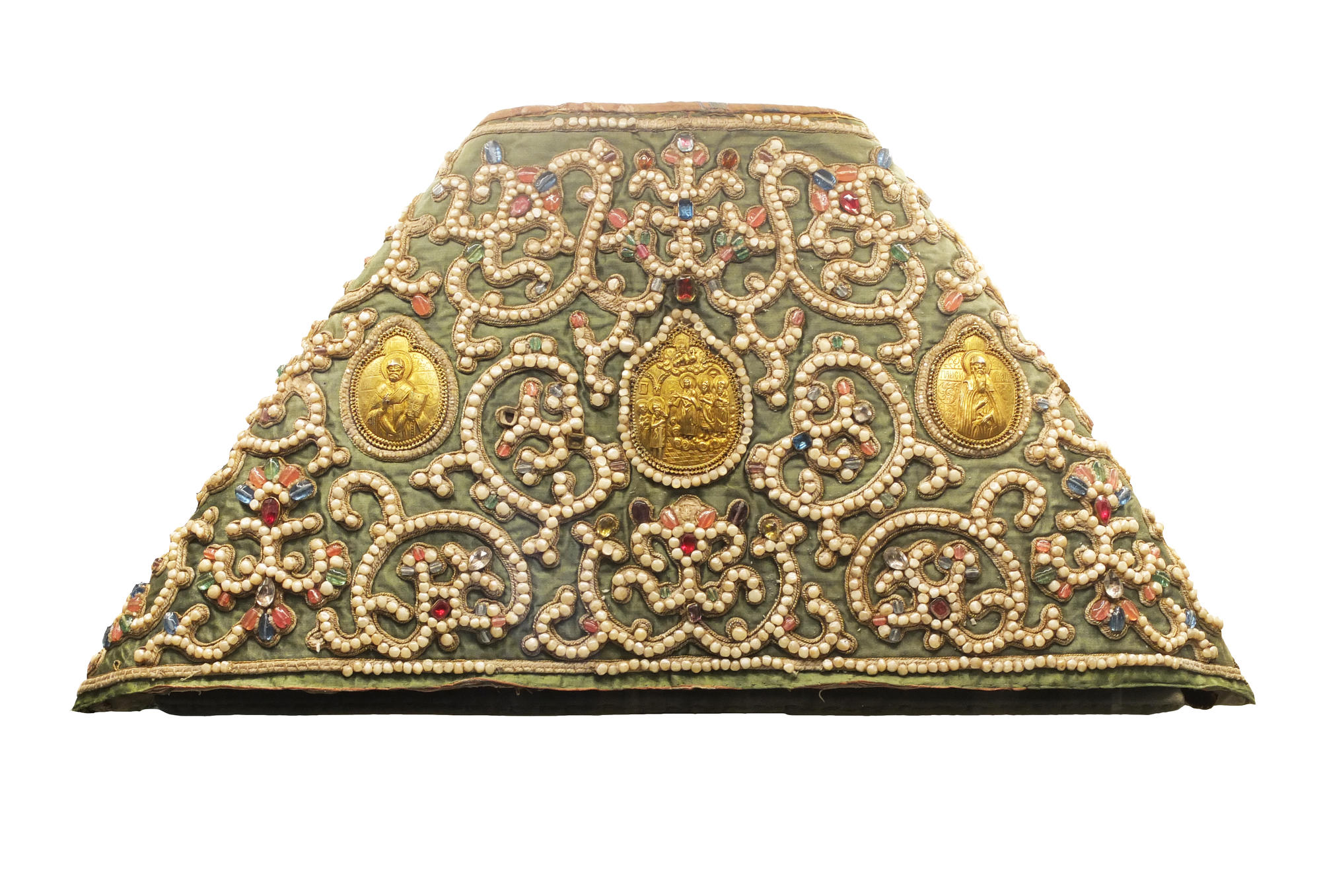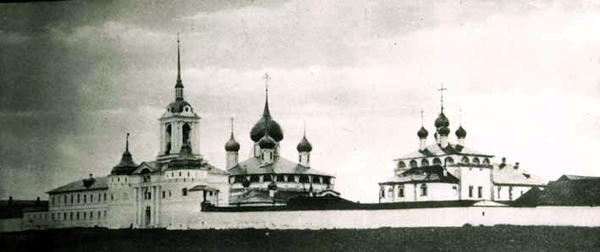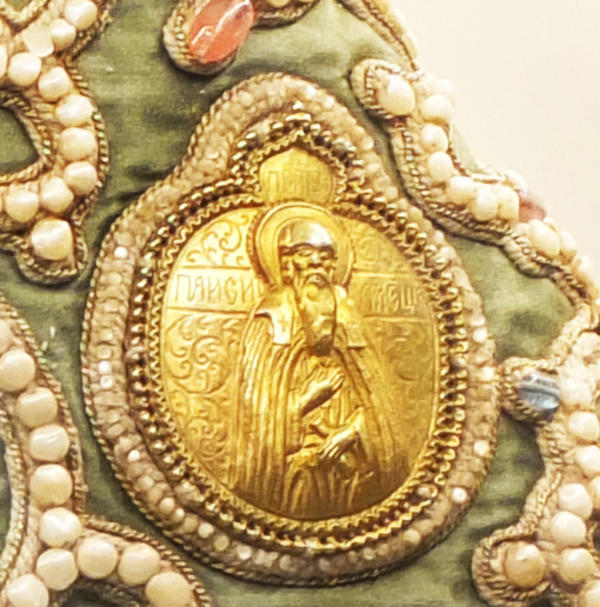A phelonion or robe is a sleeveless outer garment worn by Orthodox priests during services. It symbolizes the simple earthly garments of Christ, as well as the scarlet robe, the ceremonial mantle, put on Jesus during the trial of the Roman viceroy of Judea Pontius Pilate. In ancient times, phelonions were made exclusively of white fabric. Nowadays the garment can be of different colors, it is decorated with all sorts of patterns. The neck-piece is one of the decorative elements of the phelonion.
The style of the neckpiece from the collection of the Uglich Museum and the technique of its production indicate that it was made in the second half of the 17th century. Although it was created using a variety of materials, including satin, glass and silver, the main decoration of the piece are pearl patterns. The master threaded large pearls into one strand, and then tightly fixed them on a rigid basis — so that they exactly repeated the contours of the picture.
This neckpiece is fitted with decorative fragments — small inserts with images of Christian subjects and saints. The subject on the central fragment is the Cover of Mother of God — an important Orthodox holiday, during which believers recall the appearance of Mother of God in the Church of Blachernae in Constantinople in the middle of the 10th century. According to legend, after that grace descended on the temple and the Saracens who besieged the city retreated from it. The presence of this insertion representing the holiday confirms the version that the neckpiece came from Paisius Holy Protection monastery, which was destroyed in the late 1930s during the construction of the Uglich hydroelectric power plant.





